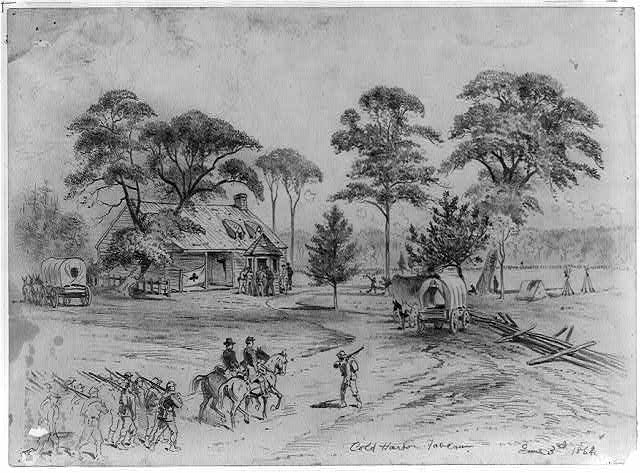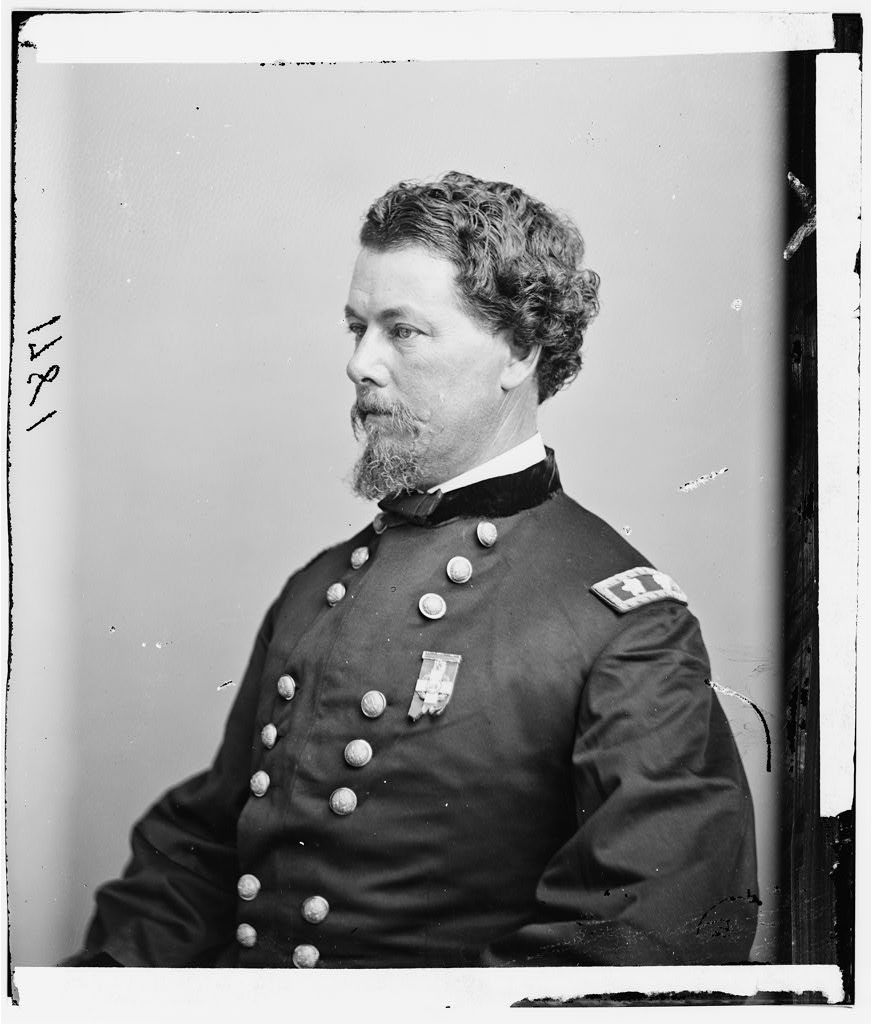The Road to Cold Harbor

The Union cavalrymen had deftly parried the attack of their counterparts the previous afternoon. Known as The Battle of Old Church or The Battle of Matadequin Creek, Brig. Gen. Alfred Torbert’s brigades had turned back a reconnaissance in force led by Brig. Gen. Matthew C. Butler. Torbert’s victory, however, was not complete. The gray horsemen were ensconced just to the south, near an intersection known as Old Cold Harbor. Their position was too close for comfort for Torbert as well as for corps chief Phil Sheridan. The Rebels were in a prime position to not only harass the expected reinforcements from the Army of the James and to strike at the Federal supply depot at White House Landing. Toward the middle of the afternoon, Sheridan decided to send Torbert forward to carry the enemy line and secure the area.
An officer in Col. Thomas Devin’s brigade recalled “Torbert’s division moved out promptly, Merritt’s brigade first, followed by Custer’s on the direct road to Cold Harbor while Devin’s brigade took a left-hand road that would bring him on the right and rear of the enemy’s line which was posted in front of the crossroads. The enemy’s line was held by…cavalry…posted behind breastworks of logs, rails and earth and poured a heavy fire into Torbert’s men as they approached. Torbert’s division was soon in line with Merritt on the right, Custer in the center and Devin on the left. After the fighting continued some time Merritt sent two regiments around to the enemy’s left and rear while the remainder of the division assaulted him in front. This maneuver stampeded the Confederates and they were pursued nearly a mile beyond Cold Harbor on the road to Bottom’s Bridge”.

James Kidd of the 6th Michigan Cavalry of George Custer’s brigade also described the action: “Custer followed Merritt…The Sixth Michigan moved by a country road to make a connection between the First and Second brigades…I reached the intersection of the country road with the left hand road before Devin appeared. My orders being to connect with him, I awaited his arrival, sending a few men out to keep watch in both directions…Devin then moved along the main road and the Sixth deployed through the woods until touch with its own brigade was obtained. In the meantime, a hard fight was in progress. Torbert…attacked the enemy’s left flank with the Reserve Brigade and the First and Fifth Michigan. This was most skillfully and successfully done. The flanking movement was led by the First and Second United States, and the Fifth Michigan…the final blow was struck by Major Melvin Brewer with one battalion of the First Michigan, whose charge mounted at the critical moment decided the fate of the field. The enemy who had been putting up a very hard fight did not await this charge…but fled”.
Interestingly, Sheridan’s troopers also encountered Rebel infantry during the fighting. The result of the fighting was that Union cavalry had been able to capture the Old Cold Harbor crossroads. But engaging foot soldiers convinced Sheridan that additional infantry may be in the area and thus, he decided to withdraw from the road junction. Before abandoning his newly won position, he sent a dispatch back to army headquarters.
Several hours later, after Sheridan had begun his withdrawal a courier arrived from Grant and Meade ordering him to return to his former position. The presence of Rebel infantry in such close proximity to their supply depot had alarmed Little Phil’s superiors. To reinforce Sheridan, Grant and Meade decided to dispatch the VI Corps to Cold Harbor. More importantly, one of the roads radiating from the junction led directly to Richmond. The side that controlled Cold Harbor would control the initiative. Sending the foot soldiers to reinforce the horse soldiers marked a shift in operations from along the Totopotomoy southeast to this lonely, desolate Virginia intersection.
